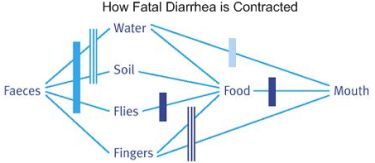I get two very different pictures of how aid funding works, depending on whether I’m looking at my options as a donor (as I’ve been doing for the last couple of years) or reading papers intended for policy makers (Disease Control Priorities report, Report of the Commission on Macroeconomics and Health).
The latter sources focus almost entirely on the granting of aid to developing-world governments by “donors” including “bilaterals, multilaterals, global programs, foundations, and large NGOs” (pg 249) – i.e., megadonors (not people like me). Pgs 247-250 discuss the coordination problems caused by different donors’ earmarks and reporting requirements as well as the potential advantages of “ensuring the countries, not donors, drive the coordination” (249). The WHO Commission on Macroeconomics and Health takes a similar perspective, endorsing a top-down plan to be implemented in partnership with governments, using the Poverty Reduction Strategy Papers they create.
Yet as a donor, I’ve never looked at or discussed the possibility of giving money to developing-world governments. I’ve dealt with U.S. public charities, and the proposals they send (large list here) involve their own projects carried out by their own staff. We’ve never discussed their role in helping to carry out the kind of large-scale plans endorsed by the WHO commission. A quick glance at CARE’s Form 990 reveals that only 18% of its expenses are grants of any kind, so they certainly don’t appear to be directing the majority of their aid to governments.
It’s possible that the link goes the other way: the DCP report mentions governments’ hiring NGOs (Pg 252). But if the NGOs are contractors, not agenda-setters, where does an individual’s donation fit in?
Either way, it doesn’t help that few NGOs have been able to give us a clear explanation of what they do (in particular, how their top-level agendas are set).
Complicating the matter further are “alliances” such as GAVI and The Global Fund. These appear to be partnerships aiming to consolidate and coordinate funding, and they fund both governments and NGOs. Does that make them a more appropriate recipient of gifts than typical NGOs? How does the Global Fund to fight AIDS, Tuberculosis and Malaria coordinate with the Roll Back Malaria Partnership and Stop TB Partnership, which appear to have largely overlapping goals but still all solicit donations individually?
Let’s say I’m a donor who trusts the WHO Commission and just wants to be as helpful as I can, without imposing my opinions about particular diseases and priorities. Should I give to the WHO? To a developing-world government? An alliance? An NGO? We’re getting a better handle on the situation and starting to break down the options, but as of yet we still haven’t seen clear answers to these sorts of questions.

 The
The